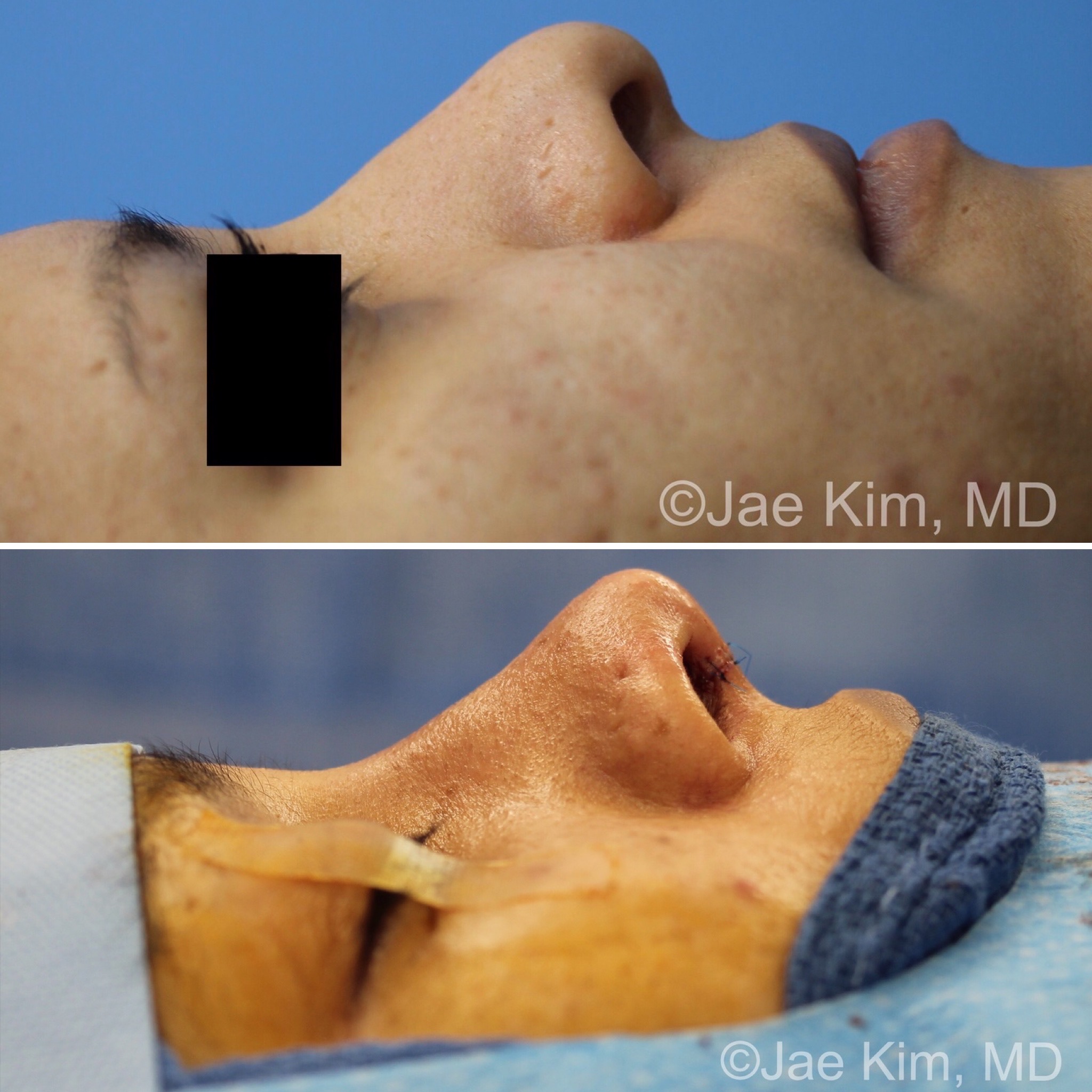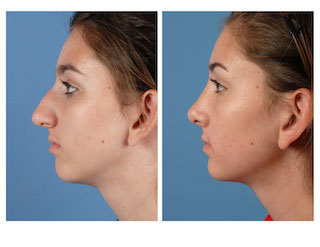Some Known Incorrect Statements About Nose Job Austin Tx
Table of ContentsGetting The Austin Rhinoplasty To WorkMore About RhinoplastyHow Rhinoplasty Austin can Save You Time, Stress, and Money.
Picture 4. Nasal bulge excision: The black delineation suggests the desired nose-reduction outcome: a straight nose. The nasal bulge is bone (red) above the scalloped grey line, and cartilage (blue) below the scalloped grey line. The surgeon cuts the cartilage part of the bulge with a scalpel, and chisels the bone part with an osteotome (bone sculpt).Rhinoplastic instruments: Bone-scraping rasps, of different grades and types, that the plastic surgeon uses to improve the corrections needed to produce a brand-new nose. In plastic surgical praxis, the term main nose surgery denotes a preliminary (newbie) reconstructive, functional, or visual restorative treatment. The term secondary nose surgery represents the revision of a failed rhinoplasty, an event in 520 per cent of rhinoplasty operations, thus a modification nose job.
Although a lot of revision rhinoplasty procedures are "open approach", such a correction is more technically made complex, normally because the nasal assistance structures either were warped or ruined in the primary rhinoplasty; therefore the cosmetic surgeon should re-create the nasal support with cartilage grafts collected either from the ear (auricular cartilage graft) or from the rib cage (costal cartilage graft).
In reconstructive nose surgery, the defects and defects that the cosmetic surgeon encounters, and should restore to normal function, kind, and appearance consist of broken and displaced nasal bones; interfered with and displaced nasal cartilages; a collapsed bridge of the nose; congenital flaw, trauma (blunt, permeating, blast), autoimmune condition, cancer, intranasal drug-abuse damages, and failed primary rhinoplasty outcomes.
When cartilage is disrupted, suturing for re-suspension (structural assistance), or making use of cartilage grafts to camouflage a depression permit the re-establishment of the regular nasal contour of the nose for the client. When the bridge of the nose is collapsed, rib-cartilage, ear-cartilage, or cranial-bone grafts can be used to restore its structural stability, and thus the visual connection of the nose.

How Austin Rhinoplasty can Save You Time, Stress, and Money.
Surgically, the borders of the nasal subunits are ideal locations for the scars, where is produced a remarkable visual outcome, a fixed nose with corresponding skin colors and skin textures. Nasal skeleton Therefore, the successful rhinoplastic outcome depends totally upon the respective upkeep or remediation of the structural integrity of the nasal skeleton, which comprises (a) the nasal bones and the ascending processes of the browse around these guys maxilla in the upper third; (b) the paired upper-lateral cartilages in the center 3rd; and (c) the lower-lateral, alar cartilages in the lower 3rd (rhinoplasty).
The paired alar cartilages set up a tripod-shaped union that supports the lower third of the nose. The paired medial crura conform the central-leg of the tripod, which is connected to the anterior nasal spinal column and septum, in the midline. The lateral crura compose the second-leg and the third-leg of the tripod, and are attached to the (pear-shaped) pyriform aperture, the nasal-cavity opening at the front of the skull.
the nasal lining A thin layer of vascular mucosa that adheres tightly to the deep surface of the bones and the cartilages of the nose. Said dense adherence to the nasal interior limits the movement of the mucosa, consequently, just the smallest of mucosal problems (< 5 mm) can be sutured mostly.

Moreover, relating to scarrification, when compared to the skin of other facial areas, the skin of the nose creates fine-line scars that normally are unnoticeable, which permits the cosmetic surgeon to tactically conceal the surgical scars. Concepts The technical principles for the surgical reconstruction of a nose obtain from the vital personnel concepts of plastic surgical treatment: that the applied procedure and method( s) yield the most acceptable functional and aesthetic outcome.
Nevertheless, the physician-surgeon and the rhinoplasty patient should abide the fact that the reconstructed nasal subunit is not a nose appropriate, however a collagen- glued collageof forehead skin, cheek skin, mucosa, vestibular lining, nasal septum, and fragments of ear cartilagewhich is perceived as a nose just since its contour, skin color, and skin texture are true to the original nose - rhinoplasty surgery austin tx.
Some Ideas on Nose Job You Should Know
1. 0 metre). Yet, such a visual outcome suggests the application of a more complicated surgical method, which requires that the surgeon balance the client's required nose job, with the client's aesthetic perfect (body image). In the context of surgically reconstructing the patient's physiognomy, the "typical nose" is the three-dimensional (3-D) template for changing the missing out on part( s) of a check over here nose (visual nasal subunit, visual nasal segment), which the cosmetic surgeon re-creates using firm, malleable, designing materialssuch as bone, cartilage, and flaps of skin and of tissue.
To effect a total nasal reconstruction, the template might originate from quotidian observations of the "normal nose" and from pictures of the client prior to he or she suffered the nasal damage (austin rhinoplasty surgery). The surgeon replaces missing out on parts webpage with tissue of like quality and quantity; nasal lining with mucosa, cartilage with cartilage, bone with bone, and skin with skin that finest match the native skin color and skin texture of the harmed nasal subunit.
Additionally, in spite of its noteworthy scarring propensity, the nasal skin flap is the prime consideration for nasal restoration, since of its higher verisimilitude. The most effective nasal reconstruction for repairing a problem (wound) of the nasal skin, is to re-create the whole nasal subunit; therefore, the injury is enlarged to comprehend the whole nasal subunit.